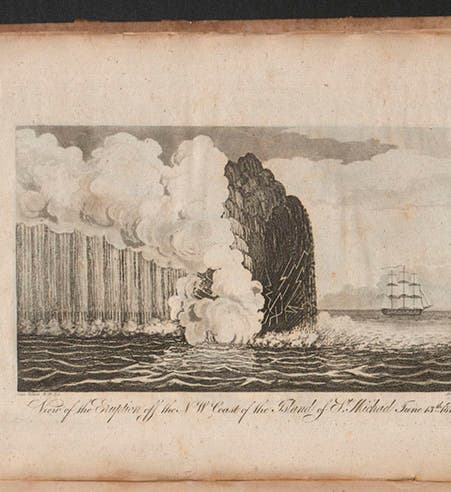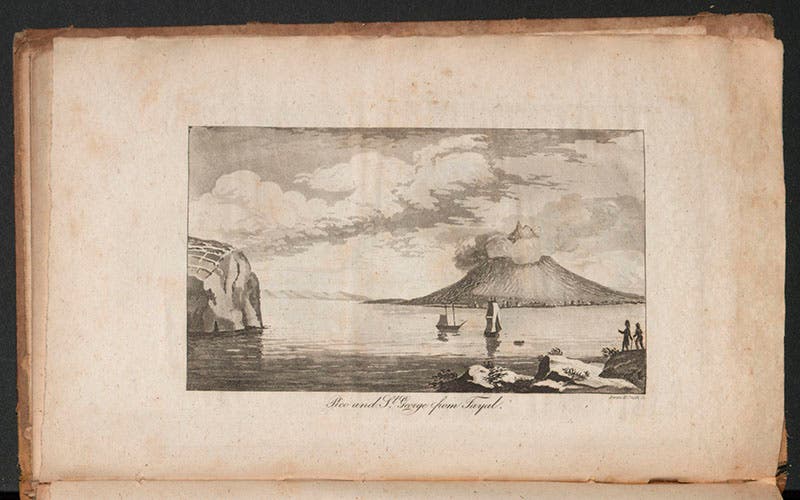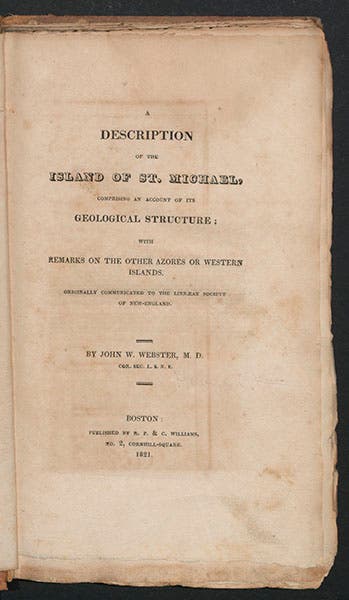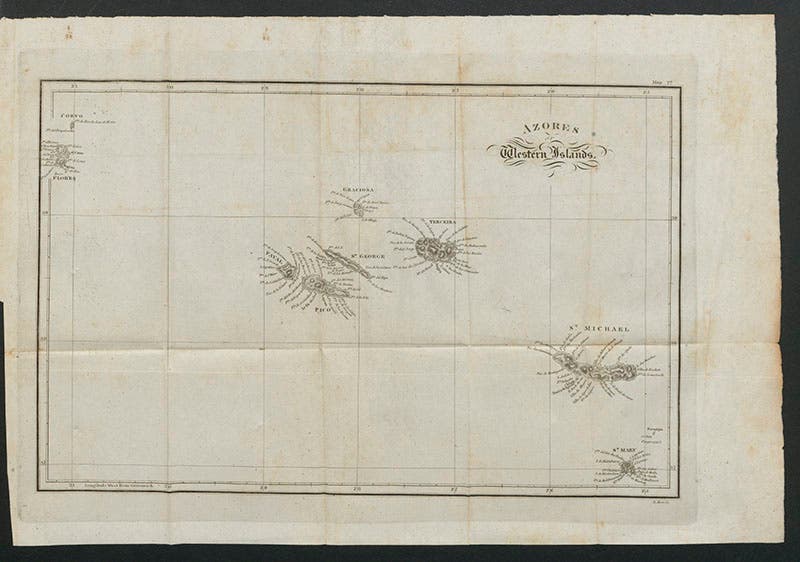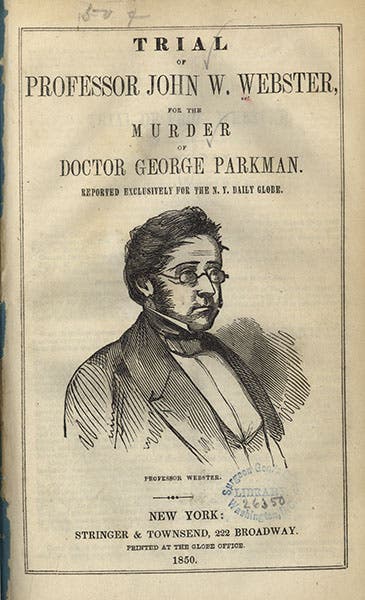Scientist of the Day - John White Webster
John White Webster, an American geologist and chemist, was born May 20, 1793. He graduated from Harvard Medical College in 1815, and would return there as professor, but in between, he visited St. Michael (Sao Miguel) Island in the Azores in 1817-18. There he acquired a wife, but that was not his purpose in going - rather, he was interested in the complicated geology of these volcanic islands, which no naturalist before Webster had ever studied.
He wrote and eventually published a book: A Description of the Island of St. Michael, Comprising an account of its geological structure; with remarks on the other Azores or Western Islands (Boston, 1821; third image). He began by discussing at length the people, settlements, monasteries, and crops (oranges being the main one), but he did eventually get to the craters, solidified lava, basalt, and earthquake faults, a discussion of which made up the last half of the book.
The work was illustrated by three aquatint plates and two maps. The first shows a new volcanic island that sprang up off the western coast of St. Michael in 1811 (first image); the second a view of Pico and the island of St. George (second image), and the third (not shown here) a small island off the southwest coast, Sabrina, that was nothing but a volcanic cone poking out of the sea. The two folding maps show the Azores (fourth image) and the island of St. Michael (fifth image)
Most of Webster's career was perfectly normal, and he was a respected if not lionized professor at Harvard right up until 1849. Then, on Nov. 23 of that year, George Parkman, a wealthy Bostonian, physician, and patron of the medical school, was murdered and subsequently carved up and fed to a furnace in the basement of the Harvard Medical School. The body was identified only through some fragments of bone and teeth - one of the first examples in American legal history of a body identified through forensics. And John Webster was charged with the heinous crime. He had apparently borrowed a considerable sum from Parkman, a loan that had not been repaid, and Parkman wanted it back. Confronted by a furious Parkman, Webster lashed out with a piece of lumber. That took only a second. The dismemberment and incineration took a few days, and Webster's suspicious activities were noticed by the building janitor. He notified authorities, and they charged Webster and brought him to trial.
The trial was a media and social sensation, and there survives a pamphlet about the trial in the collections of the National Library of Medicine (sixth image). The trial was also apparently a travesty, in that the judge denied much of Webster's evidence and instructed the jury that "guilty" was the only possible verdict. Webster was found guilty as instructed, and hanged a short time later. Opinion is divided as to whether Webster was guilty of the crime; some think the janitor did it. We take no stance here. But Webster was NOT buried in Mount Auburn Cemetery in Cambridge, where you may find many of his Harvard colleagues. But then, neither was Parkman. Dr. William B. Ashworth, Jr., Consultant for the History of Science, Linda Hall Library and Associate Professor, Department of History, University of Missouri-Kansas City. Comments or corrections are welcome; please direct to ashworthw@umkc.edu.

